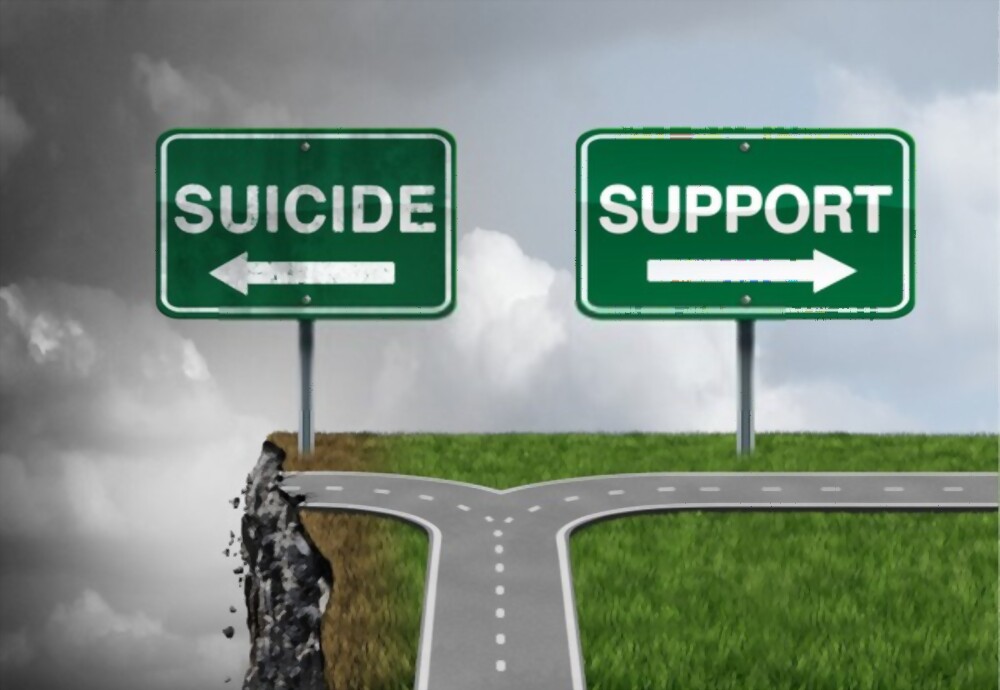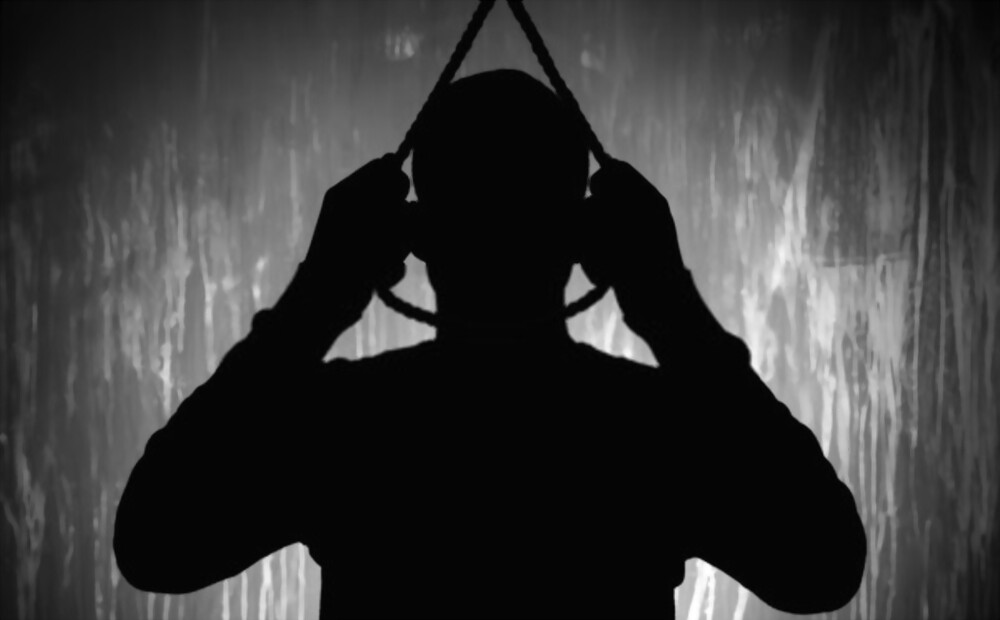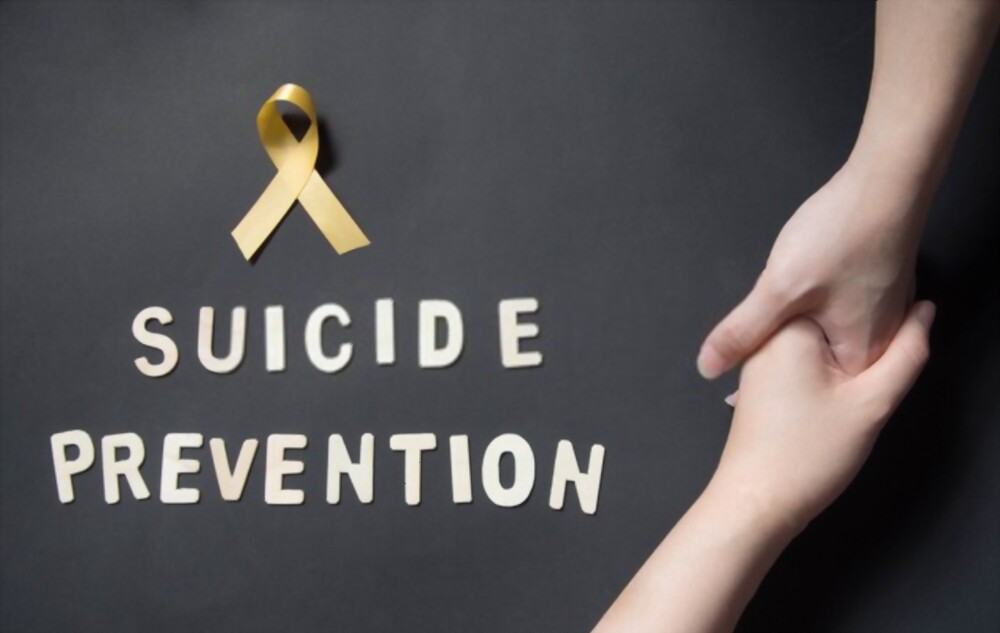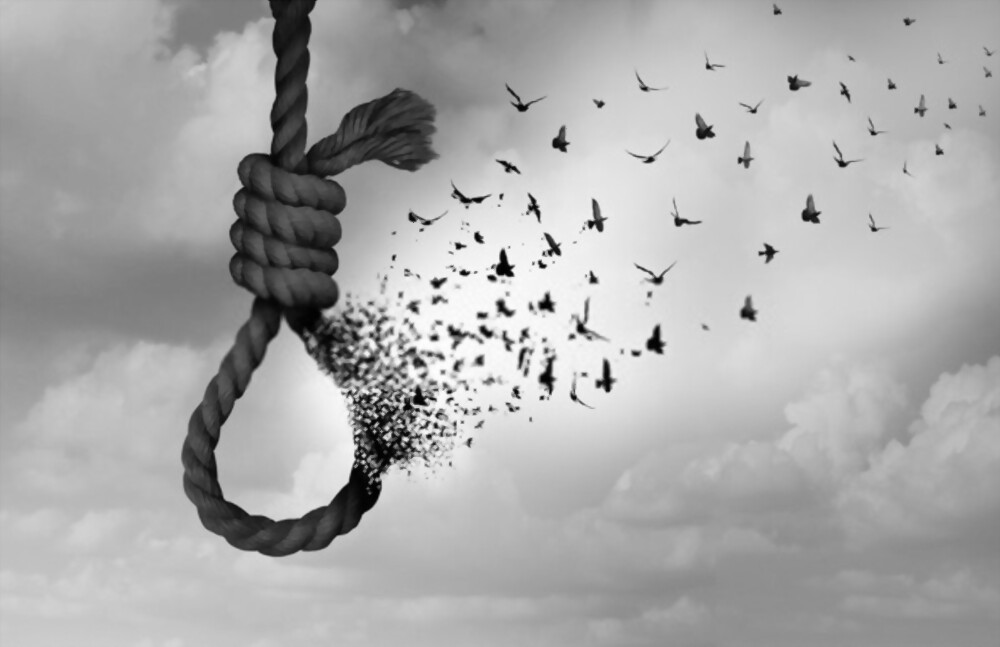One in every 100 deaths is responsible for suicide.

WHO guidance to assist the world in meeting the target of reducing suicide rates by one-third by 2030.
According to the World Health Organization’s most recent calculations, published in “Suicide worldwide in 2019,” suicide remains one of the leading causes of death worldwide. Suicide kills more people each year than HIV, malaria, breast cancer, war, and homicide combined. Over 700,000 people died by suicide in 2019, accounting for one out of every 100 deaths, prompting WHO to issue new guidelines to help countries improve suicide prevention and care.
Dr. Tedros Adhanom Ghebreyesus, Director-General of the World Health Organization said: “We can and should not ignore suicides. “Each is a tragedy. Everybody. We are focusing even more on suicide prevention, with many of the risk factors for suicide – job loss, financial burden, and social isolation – still present after months of handling the COVID-19 pandemic. The new guidance issued today by the WHO sets out a clear course to increase efforts to prevent suicide.”
Suicide was the fourth leading cause of death among 15- to 29-year-olds, trailing only traffic accidents, tuberculosis, and interpersonal violence.
Rates vary across countries, regions, and men and women.
Males are twice the suicide rate of women (12.6 per 100 000 males compared with 5.4 per 100 000 females). Suicides among men are usually higher in high-income countries (16.5 per 100 000). Women’s suicide is most frequent in low-income countries (7.1 per 100 000).
WHOs in 2019 had higher suicide rates than the global average for the African (11.2 per 100,000), European (10.5 per 100,000), and southeast Asian regions ( 10.2 per 100,000) (9.0 per 100,000). Suicides were the lowest in the eastern Mediterranean (6.4 per 100 000).
Globally, but in the Americas, suicide rates decrease.
From 26% to 47% in the European region and 49% in the West Pacific region, suicide rates decreased worldwide by 36% between 2000 and 2019. The figure is 17%.
In the Americas, however, rates increased by 17% during the same time period.
Although suicide prevention has been given priority in some countries, far too many still remain uncommitted. There are currently only 38 countries with a national strategy to prevent suicide. A significant acceleration in suicide reduction is needed to meet the SDG target of one-third reduction of global suicide rates by 2030.
LIVE YOUR LIFE

WHO is releasing comprehensive guidance for implementing its LIVE LIFE approach to suicide prevention today to assist countries in their efforts. This approach’s four strategies are as follows:
restricting access to suicide-inducing substances, such as highly toxic pesticides and firearms;
educating the media on proper suicide reporting;
promoting adolescents’ socio-emotional life skills; and
• early identification, assessment, management, and follow-up for anyone experiencing suicidal thoughts or behavior.
The prohibition of the most dangerous pesticides is a high-impact intervention.
Given the estimated cost-effectiveness of national bans against highly toxic, highly hazardous pesticides as a result of pesticide poisoning, the WHO recommended such bans. Additional measures include limiting access to firearms, reducing drug packages, and erecting barriers on the jumping sites.
The media must report responsibly.
The media’s role in suicide prevention is emphasized in the guide. Imitation (or copycat suicides) may rise as a result of media reports on suicide, particularly if the report features a celebrity or describes the method of suicide.
According to the new guide, the media should monitor suicide reporting and counteract it with stories of successful recovery from mental health challenges or suicidal thoughts. It also suggests that social media companies collaborate to raise awareness and improve protocols for detecting and removing harmful content.
Adolescent Assistance
Adolescence (10-19 years old) is an important time for developing socio-emotional skills, especially because half of all mental health problems appear before the age of 14. When a suicide risk is identified, the LIVE LIFE guidance encourages actions such as mental health promotion and anti-bullying programs, referrals to support services, and clear protocols for those who work in schools and universities.
People at risk should be identified and followed up on as soon as possible.
People who have attempted suicide or are perceived to be at risk require early identification, assessment, management, and follow-up. One of the most important risk factors for future suicide is a previous suicide attempt.
Early detection, assessment, management, and follow-up should be taught to healthcare workers. Survivors’ groups of people who have been bereaved by suicide can supplement the care provided by health services. Individuals in acute distress should also have access to crisis services, which should provide immediate assistance.
The new guide can be used in countries such as Australia, Ghana, Guyana, India, Iraq, the Republic of Korea, Sweden, and the United States by those interested in implementing suicide prevention activities at national and local, governmental, and non-governmental levels. It includes examples of suicide prevention measures being taken around the world.
“Although the ultimate goal of all governments should be a comprehensive national suicide prevention strategy, the World Health Organization’s expert on suicide prevention, Dr. Alexandra Fleischmann, said that “before LIVE LIFE interventions can save lives and prevent the following heartbreak for those left behind.”
Five key takeaways from people who have attempted suicide

1 Remove the stigma associated with suicide.
Stigma is pervasive, and it severely limits people’s willingness to discuss suicidal thoughts and feelings.
It reduces the likelihood of people seeking and engaging in professional support, especially if they have had negative experiences.
It is critical that we remove the stigma associated with suicide and mental illness and encourage those who are suicidal to talk about their feelings and seek help.
2 Expressing suicidal thoughts isn’t just for attention.
Many people talked about the desperation that they were not taken seriously or accused of paying attention to suicides. This can be extremely harmful to people who are already vulnerable, and it exacerbates the pain and hopelessness they are feeling.
As one participant put it,
‘I actually kept pleading for assistance.’ That’s something I used to do a lot. I’d stand in front of my family and teachers and just say, “I need someone to help me fix myself. I’m not sure what’s wrong with me “.. And no one knew what was wrong with me; they just assumed I was looking for attention… They didn’t care what I said, or how many times I tried to tell them I needed help. It was as if, “No, you’re just looking for attention. We’re going to disregard you “‘.
3 Suicide is not an act of selfishness.
Several people expressed a desire to “end the suffering” they were causing others. In some ways, their suicide attempt was not a selfish act, but rather a misguided belief that by taking their own life, they would improve the situation of those they cared about.
Despite this, it is widely held in the community that people who commit suicide are selfish and do not consider the impact on others. These negative assumptions make it less likely that someone will open up and seek help.
As one participant put it,
‘Many people believe that people who commit suicide are selfish. Whereas for me, when I was in the position I was in with my previous attempt, it wasn’t selfish. It was the most selfless act I could muster. Remove me from the equation to protect the people.
I was concerned about. It wasn’t about ending my life and putting an end to it for me; it was about protecting other people, which now makes me wonder, what? But it made perfect sense at the time. Everyone would be better off if I didn’t exist.’
4 Professional assistance is essential.
Most people had a mix of helpful and unhelpful interactions with professionals, and many described a long and complicated path before finding appropriate help.
Access to appropriate professional support was cited as the most significant impediment to recovery by two-thirds of those polled. Many people felt there was a little follow-up after hospitalization and few, if any, referrals.
Having access to good professional support, on the other hand, was cited as the most beneficial factor in their recovery. The majority of participants persisted and eventually found good professional support, which proved to be a watershed moment in their recovery.
5 Suicidal attempters are resilient
The research shows that people who attempt suicide can recover, and those who survive an attempt are often stronger and more resilient. As one participant put it, “a lot of people – people who don’t understand or are in the midst of it – believe that having a mental illness or feeling like committing suicide is a sign of weakness.” And, in my long experience, the opposite is true. That it takes an enormous amount of strength to continue to survive, to continue to live with that much pain – especially if you don’t have help or adequate support.’
Attempted suicide is the single most important risk factor for suicide death. To reduce the suicide rate, we must first better understand what helps and hinders people who attempt suicide.
Four suggestions to help mental health services respond to suicide bereavement.

Suicide is one of the leading causes of death among people with mental illnesses, which is a sobering fact.
The suicide of a loved one with a mental illness has a devastating impact on families and friends. Bereaved people frequently experience a wide range of complex emotions, including confusion, despair, and anger, both at themselves and at mental health services.
Suicide bereaved people are at a higher risk of a variety of health problems, including suicide. Bereavement support is an important but often overlooked suicide prevention strategy.
According to SANE Australia research, families and friends who lose a loved one to suicide due to a mental illness do not always receive adequate support or acknowledgment from the treating mental health service. Services acknowledge that this difficult issue is not always addressed as well as it could be.
As a result, SANE Australia created Bereavement Guidelines for services, encouraging them to provide a more formal and thoughtful response to the bereaved. These guidelines provide strategies for overcoming common roadblocks to helping family and friends:
Concern about legal action
Many services respond to suicide deaths within their service from a medico-legal management standpoint.
Case notes are taken for the coronial investigation, and the attitude is frequently, “the less said, the better.” Unfortunately, this can leave families and friends perplexed, hurt, and angry about why services aren’t speaking to them or acknowledging their grief.
Liability concerns can be real, and it is critical that services operate in accordance with medico-legal policy. This should not, however, prevent contact and support from being offered.
When services recognize grief and engage with families following a suicide, it can make a huge difference in the experience of those who are bereaved – supporting families is not an admission of liability.
Uncertainty about confidentiality
The rules governing confidentiality can be perplexing. Health professionals are sometimes unsure what to say to families and, as a result, say nothing at all. It is critical that workers check their state or territory’s confidentiality laws and are clear about what they can discuss.
There is no reason why the client’s treatment cannot be discussed if the family is already involved in the treatment. They are also entitled to access their deceased relative’s medical records under Freedom of Information legislation.
Even if certain information cannot be discussed due to confidentiality, engaging with bereaved families and friends allows you to explain what will happen next, such as the process of internal inquiries or the coronial inquest.
Opening up dialogue with the bereaved does not require a breach of confidentiality.
Uncertainty about the role of mental health services in providing ongoing support to bereaved families.
Another common barrier that mental health workers mention in their support of bereaved families and friends is that they do not have the mandate or capacity to provide ongoing support to those who are bereaved.
Workers are frequently under tremendous stress as a result of high caseloads and limited resources, making it extremely difficult to provide support to people who are not formally clients. This is undoubtedly a significant barrier for many, though some services are more adaptable and willing to push the boundaries of who they will work with.
There is a strong case to be made for this flexible way of working because it can be an extremely effective preventative measure – by assisting the bereaved family in coping, they are less likely to become clients themselves. It also serves as a stopgap in some communities when other counselling or bereavement services are unavailable.
Referrals to local bereavement services are an important service that they can provide for services where follow-up support for the bereaved is not possible.
Concerns about negative reactions from family members
When mental health services reach out to families after the death of a loved one to offer support, they may be concerned about the reactions they may receive. Friends and family members may experience a range of emotions, including anger, frustration, and fear, which they may unintentionally direct at others.
It is critical to remember this when listening and allowing people to sit with their grief and emotions rather than becoming defensive. This can be challenging if employees believe that negative emotions are being directed at them personally, and it is natural for them to feel anxious.
Also Read :





